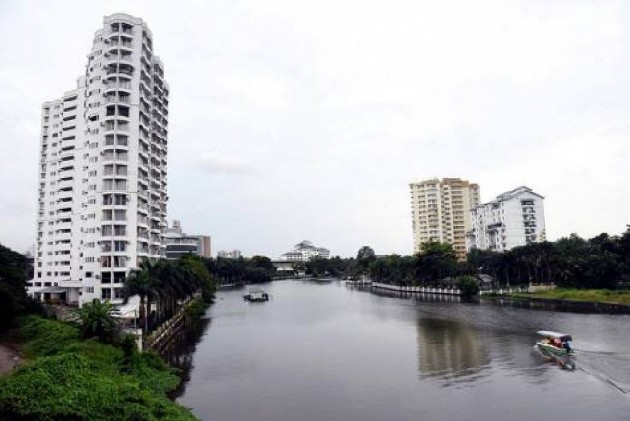
Authorities prepare detailed plan for demolition of Maradu flats

Setting the stage for razing down of four multi-storey illegal apartment complexes here later this week, the authorities on Sunday (January 5) came up with a detailed plan including declaration of exclusive zone around the structures where “no entry” is allowed.
Police said people will not be allowed to enter within a 200m radius of the apartment complexes in Maradu municipal area on January 11 and 12, the dates fixed for demolishing the illegal structures using controlled implosion method.
“Section 144 (CrPC) would be imposed within the exclusion zone. No entry is allowed in the exclusion zone. The exclusion zone would be implemented and maintained by the police and any entry in the exclusion zone area would be illegal,” police said.
The authorities are implementing the Supreme Court order directing to demolish the water front high-rises constructed in violation of coastal regulation zone norms. Close to 500 police personnel would be deployed at every demolition site, Kochi City Police Commissioner and Inspector General Vijay Sakhare told reporters here.
The 19-floor H2O Holyfaith apartment complex having 90 flats and the Alfa Serene complex with 73 flats in its 17 and 12 floors twin towers would be demolished on January 11 in a gap between 11 am and 11.05 am.
While the 17-floor Jain Coral Cove apartment complex with 122 flats would be razed at 11 am on January 12, the Golden Kayaloram with 40 flats and 17 floors would be demolished at 2 pm, authorities said.
The water bodies around the flat towers are also part of the exclusion zone and entry in the water bodies is also prohibited, police said. The authorities have issued guidelines to media
directing not to stand immediately on the exclusion zone boundary and set up their equipment only after some distance from the exclusion zone boundary. Flying drone cameras within the exclusion zone has been banned.
“The entire exclusion zone is a No-fly Zone. Any unauthorised drones flying would be taken down. Any unauthorised drone flying near the building may trigger the explosives and may lead to premature detonation,” police said. “We are ready and hopefully everything will go on well without causing inconvenience to people, without causing any harm to anybody,” Sakhare said.
The companies awarded contract for demolishing the structures have started filling explosives in the interconnected holes drilled into their pillars. The intermediate walls of the buildings have been demolished through pre-demolition works and now the apartments are standing on bare structures.
Ernakulam district authorities and other agencies, including Petroleum and Explosives Safety Organisation, have started completing formalities, including issuing No Objection Certificates and clearance certificates to the firms which won the contracts to bring down the structures.
According to reports, around 850 kg of explosives are required for the demolition of the buildings using controlled implosion. Sakhare said the probability of any mishap is “very very rare” as the explosives which have been placed on columns have been covered properly with a protective material.
A total of 343 waterfront flats were built in the Maradu municipality by violating the Coastal Regulation Zone norms. The Supreme Court in September last year had directed demolition of the apartment complexes within 138 days, a timeline given by the Kerala government.
On May 8 last year, the apex court had directed that these buildings be removed within a month as they were constructed in a notified CRZ, which was part of the tidally-influenced water body in Kerala. The court had passed the order after taking note of a report of a three-member committee, which said when the buildings were built, the area was already notified as a CRZ and construction was prohibited.

